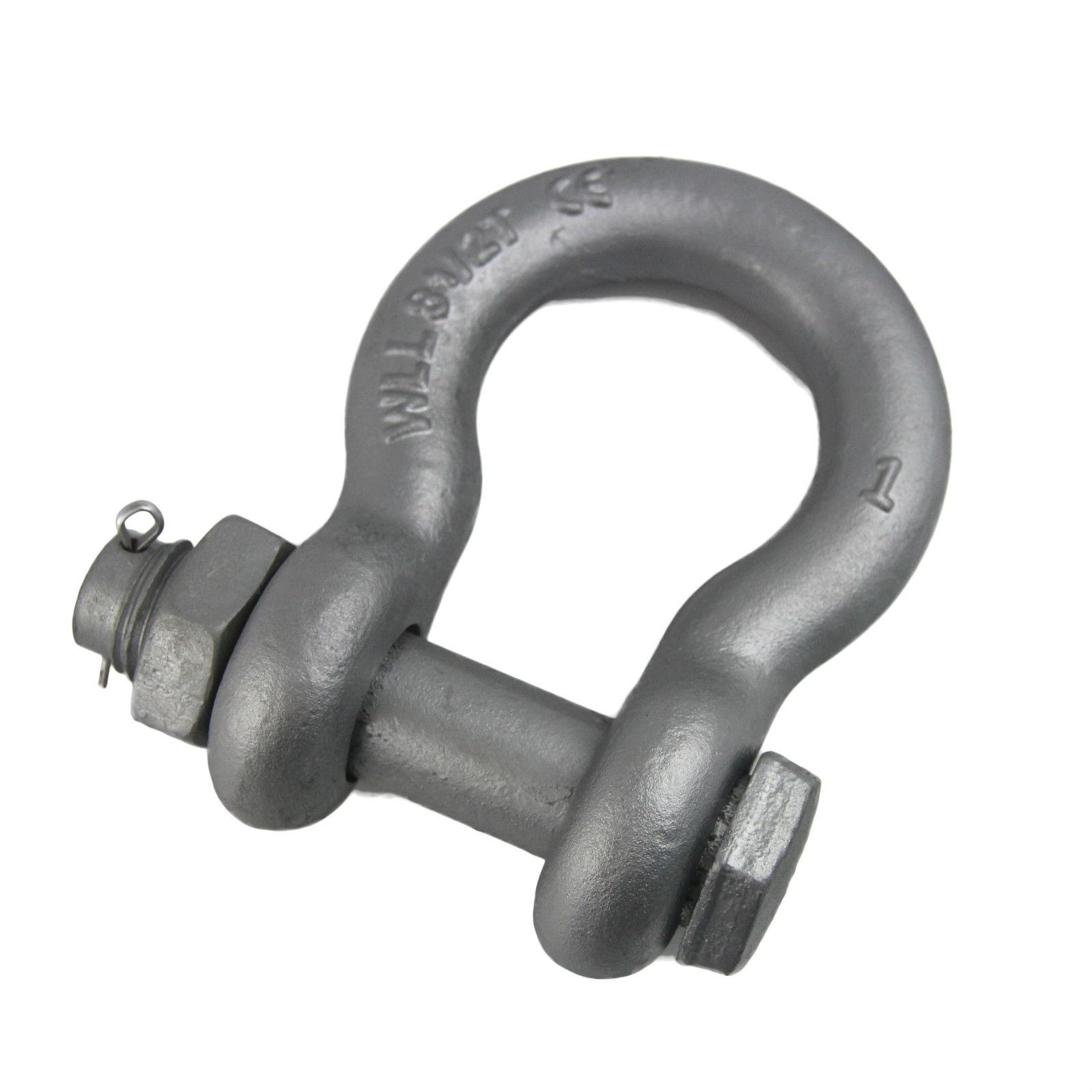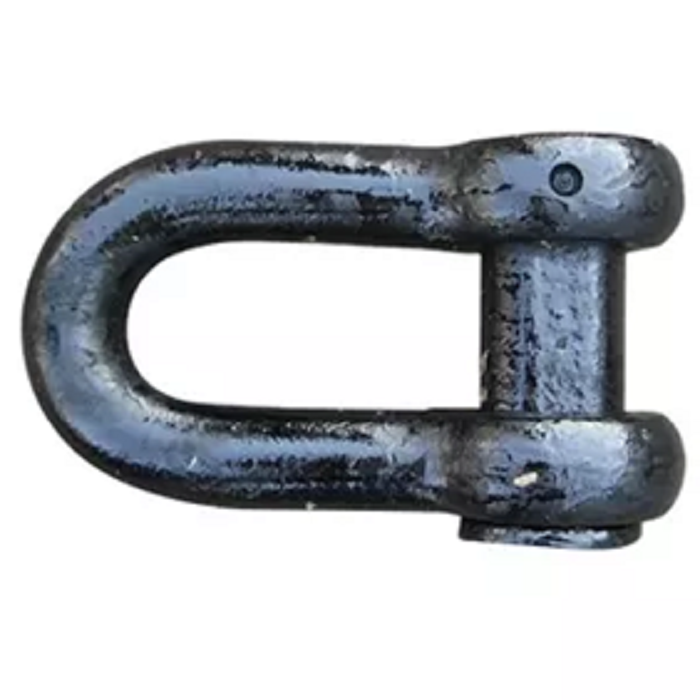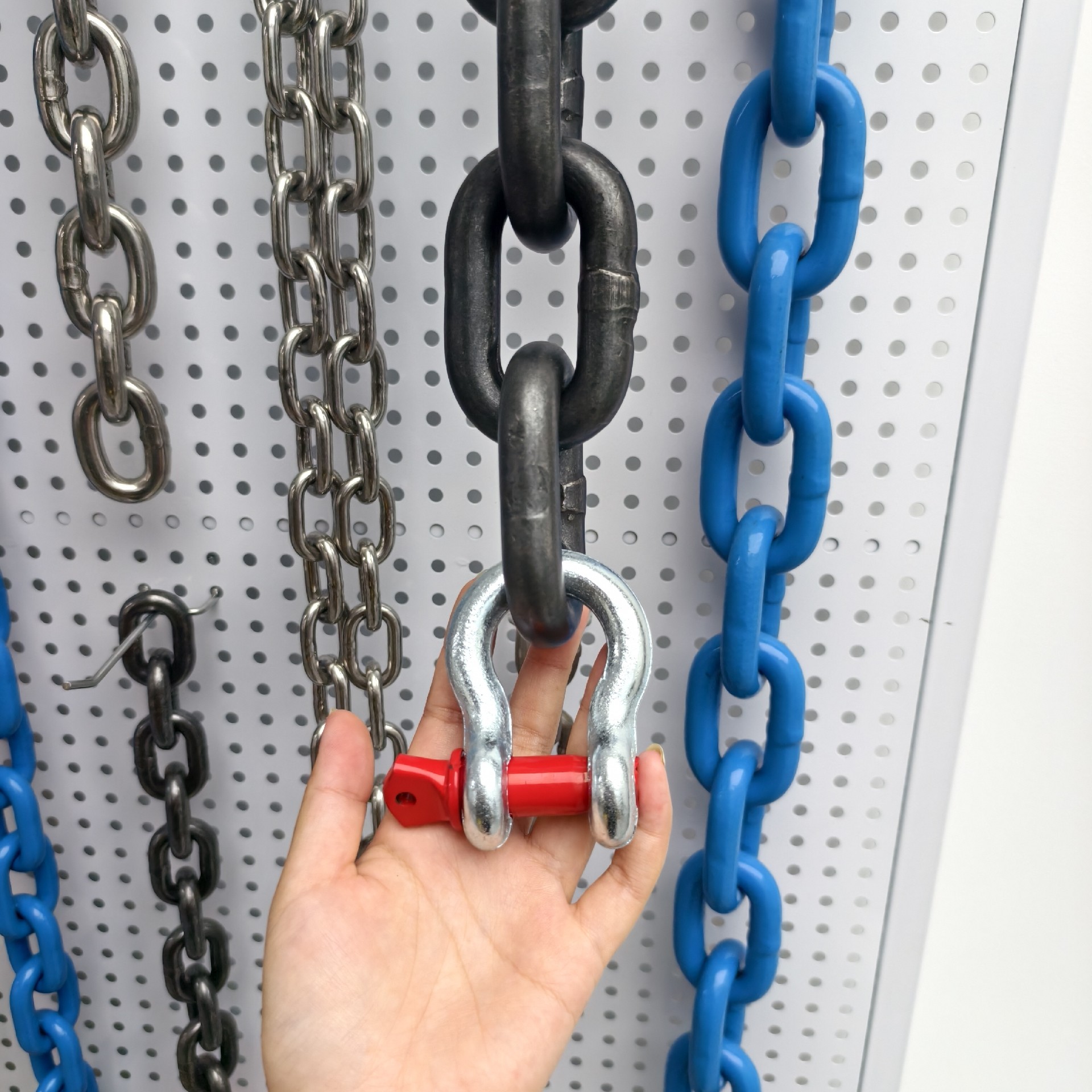Our staff will contact you within 12 hours, You can also contact us through the following ways:
Contact US WhatsApp: +8618766656705
- Email: [email protected]
- Tel: +8618766656705
- Web: https://www.toponechain.com/
Shackles drive anchors, raise turbines, and move ore, yet crews often grab the wrong style and watch pins bend or buckets jam. The marine world counts on Kenter, End, and anchor shackles; lifting teams rely on bow and D shackles; conveyor builders lock loads together with open connecting, bucket, vertical, and flat links. This guide unpacks all three application families, shows their strengths, and hands you fast selection charts so you pick right every time.
Shipyards cut anchor chains to length, then hammer in two-piece Kenter shackles. A locking C-plate fits inside an oval housing and carries the same proof load as adjacent links. Crews swap damaged shots at sea with only a pin driver and hammer. Kenter units deliver smooth crowns that slide over chain stoppers and windlass gypsies without snagging.
End shackles sit between the last chain shot and the anchor D-shackle. They share the oval body of a chain link but add a larger pin eye for the anchor pin. This geometry steers axial load straight through the shank and keeps side forces away from the windlass.
Anchor shackles (often bolt-type bows) connect heavy mooring bridles or buoy risers. The round bow handles surge-induced side angles, while the nut-cotter pin combo locks the pin for months underwater.
Marine Pick List
Task | Best Choice | Reason |
Join chain shots | Kenter | Same strength, tool-less at sea |
Attach anchor to chain | End + anchor shackle | Aligns load, absorbs surge |
Mooring buoy to riser | Bolt-type bow | Survives wave-induced angles |

Bow shackles spread sling legs up to 120° because the wide crown stops jaw pinch. Screw-pin models rig and derig fast on construction sites, while bolt-type units ride long-haul low-boys. Painters color-code pins: red for Grade 100, yellow for Grade 80, green for low-alloy.
D shackles keep links, hooks, or eye bolts in tight axial line, so they deliver higher shear capacity per millimeter of pin. Bolt-type D shackles guard against vibration when low-bed trailers rumble over interstate potholes.
Lifting Quick-Select
| Pull Geometry | Pin Style | WLL Factor* | Best Fit |
| Multi-leg, angled | Screw-pin bow | 6×pin² | Tower crane spreader |
| Permanent axial | Bolt-type D | 5×pin² | Offshore module lug |
| Daily tie-downs | Screw-pin D | 5×pin² | Flatbed excavator haul |
*Typical ratio; verify maker chart.

Mining and cement plants rarely use bow or D shackles. Instead, they join link chains with purpose-built connectors.
Techs drive a taper pin to lock two round links together. Open links simplify mid-run swaps, yet they tolerate only in-line tension, so side guides must carry lateral thrust.
Bucket elevator chains need extra web plates to bolt buckets, plus deep bushings that ride sprockets. Designers size plate thickness so bearing area stays above 8 mm² per kN.
Drag-chain conveyors push clinker or wood chips with flat or vertical links that scrape trough bottoms. These links boast wide wearing surfaces and carburized pins that shrug off abrasive dust.
Conveyor Link Snapshot
| Link Style | Typical Pitch | Extra Feature |
| Open connector | Same as base chain | Taper pin locking |
| Bucket link | 125–315 mm | Bucket hole pads |
| Vertical link | 142–260 mm | Deep sidebars resist chute drag |
| Flat link | 102–250 mm | Hard-faced shoes reduce wear |

| Application Family | Key Products | Load Path | Connection Speed | Release Need |
| Marine | Kenter, End, Anchor | Axial + surge | Medium | Rare |
| Lifting / Tie-down | Bow, D (screw or bolt) | Axial or angled | Fast (screw) / Secure (bolt) | Moderate |
| Conveying | Open, bucket, vertical, flat links | Axial | Semi-permanent | None |
Marine units: measure crown wear; retire at 12 % loss.
Lifting shackles: check pin fits flush and threads clean; replace pins not whole bodies where allowed.
Conveyor links: gauge pitch growth; swap when stretch hits 2 %.
Carry a caliper, an 8× loupe, and a can of hi-vis paint, then tag suspect parts for replacement at the next maintenance stop.
Kenter and end shackles hold anchors, bow and D shackles lift and tie down, while specialized links keep conveyors moving—choose each family by load path, angle, and service interval, and every chain will work as engineered. Explore TOPONE CHAIN shackles and connectors today and rig with total confidence.